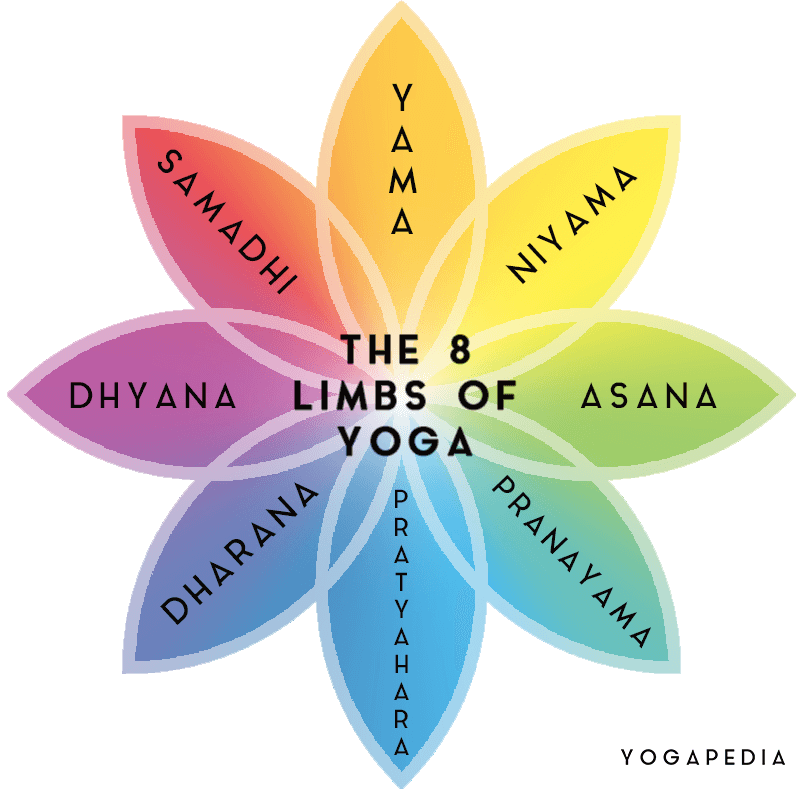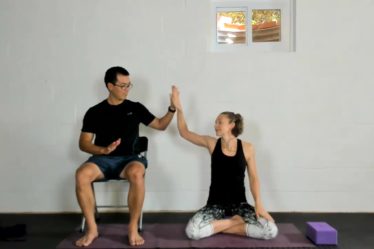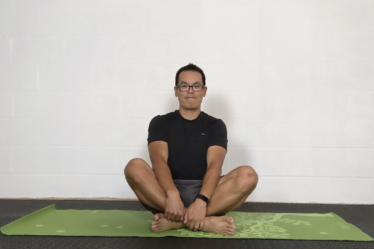
I TRY to incorporate yoga philosophy into the classes I teach. I have good intentions as I am creating themes and sequencing the asana portion. However, when it comes to the actual delivery, I tend to forget the important things I wanted to say. I get so wrapped up in making sure that people are physically safe and that my movement cues are landing that I end up with a more narrow focus than I’d like.
I also have a pipe dream of teaching a class or workshop that focuses solely on the philosophy and history of yoga — but to be honest, I don’t think people would sign up for that. I’ve got to meet my students where they are, and *most* students come for the physical practice, and that’s okay. I just sneak in bits and pieces when I can during class, and that leaves me with this blog as a medium to share what I’ve learned and what I love about yoga as a lifestyle. Yoga as a way of being.
To better understand where I’m headed over the next several weeks, I need to give you a BRIEF history lesson. Bear with me! Also, please keep in mind I am sharing with you my current understanding of these ideas. I am a middle-aged white woman from the midwest and have only spent the last 6 or 7 years studying this ancient tradition. I implore you to consider these factors, and absolutely seek out other resources to dive deeper for yourself! That said, here goes:
Patanjali was a sage in ancient India (around 500-200 BC) who is credited with writing the Yoga Sutras, one of the first written texts describing the practice of yoga. In it he defines yoga and outlines the 8 limbed path (Ashtanga) as a way to achieve moksha (freedom / liberation). The 8 limbs include all the different ways in which we may practice yoga to attain this freedom from our own suffering and are noted below:
Yamas — moral restraints; how you behave outwardly toward others
Niyamas — lifestyle ovservances; guidelines for how to treat yourself
Asana — physical practices
Pranayama — breathing techniques
Pratyahara — sense withdrawal
Dharana — focused concentration
Dhyana — meditation
Samadhi — enlightenment / bliss
In most texts that I have read, this list is always presented in this order, however many images will represent it visually with a tree or a wheel or a lotus flower where the center is the “self” and branches/spokes/petals are the different paths one may take. Meaning, it’s a non-linear journey — there is no set place to begin or end the process. It is not a step by step instruction guide where one must do each thing on the list in a certain order. One should incorporate these practices into their daily lives as they need to in order to achieve a yogic state, the liberated state, where we are free from suffering. Whew.
A skilled teacher can incorporate teachings from all 8 limbs into one class. These are the classes that you leave with that super-relaxed feeling. You are calm. Your mind is quiet. And you wonder how the time passed from the opening chant of “Om” to savasana. I’m not saying that you got to a state of bliss or enlightenment in one hour (may we all be so lucky!), but you were certainly focused enough on your movement or your breath so that your thoughts and worries dissipated, even if just for a few brief moments.
In fact, that’s exactly why yoga works to quell my own anxiety. My mind is a VERY busy place. However when I am practicing yoga I have to devote ALL of my attention and mental energy to the movement of my body and controlling my breath throughout the process. I don’t have any brain space left for all the other flittering thoughts (did I close the garage door, who’s turn is it to unload the dishwasher, I need to buy a birthday card for grandma, etc.). All of that goes away and I am present on my mat. For a few brief moments of my day I am free from the suffering that is primarily created in my own mind. I am free.



[…] talked about the general overview of the 8 limbed path (HERE) and covered the first limb last week – the Yamas (HERE). Today we will look at the […]